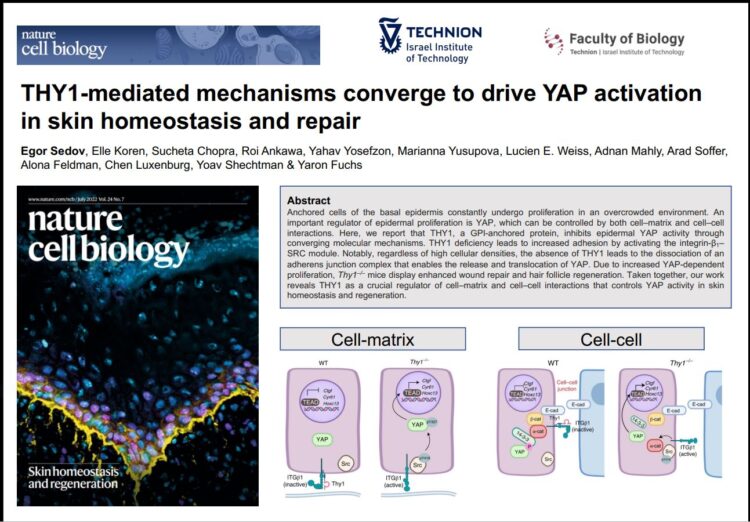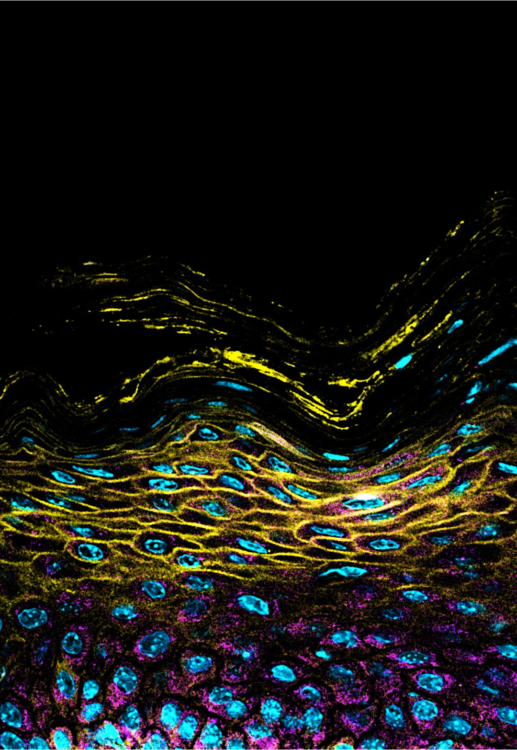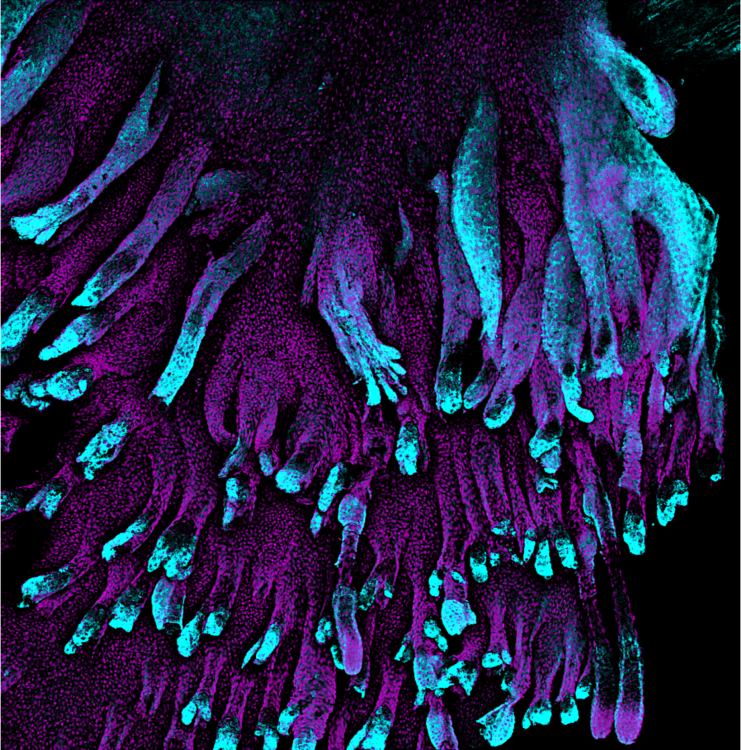SPOTLIGHT ON RESEARCH
PAPER OF THE MONTH June 22
We are pleased to announce that the winner of this June article is the doctoral student Egor Sedov from Prof. Yaron Fuchs’ lab, whose article was published in Nature Cell Biology, Volume 24, Issue 7, 2022. On the occasion of the win, we asked Egor to provide us with some interesting details about the study, the path that led to the research, and also a bit about him.
Hi, could you introduce yourself in a few words? Hi, my name is Egor Sedov. I’ve recently graduated from the Technion, where I did my Ph.D. in Prof. Yaron Fuchs’ Lab.
Could you explain what Prof. Fuchs laboratory is about?
Yaron’s laboratory is a kind, nurturing, and fun environment that is a true one-of-a-kind platform for research and development. Back in 2015, Yaron established a unique lab in the Technion, where he brought together two distinct but closely related fields of life and death – stem cells and apoptosis. Utilizing state-of-the-art techniques and approaches, Yaron’s team has managed to address so many important topics in this area, including uncovering surprising non-apoptotic functions of caspase-3, deciphering how apoptosis of intestinal stem cells regulates tissue regeneration, establishing a novel ex vivo organoid system for a drug screen, unearthing critical mechanisms in apoptosis-induced stem cell proliferation, and much, much more. Besides the amazing research, the lab was always about the personal and scientific development of every single student. Yaron always worked extremely hard, through long days and nights, to provide the best tools and environment for his students to grow and flourish. On that note, I will say that it was a pleasure to be a part of the most hardworking and dedicated team.
Could you tell us about your current article/research, what was the main purpose of the research and what did you discover?
During my Ph.D. I focused largely on the mouse skin and its appendages. I discovered that Thy1, a GPI-anchored protein, controls the proliferation of basal cells in the epidermis (outer layer of the skin). In this setting, basal epidermal stem and progenitor cells constantly undergo proliferation in an overcrowded environment. One important regulator of epidermal proliferation is YAP, which can be controlled by cell-matrix and cell-cell interactions. I was able to show that Thy1 controls epidermal YAP activity through converging molecular mechanisms. In mice lacking the Thy1 gene, epidermal cells exhibited increased adhesion by activating the integrin-β1–SRC module at the cell matrix. In addition, I determined that Thy1 participates in an adherens junction complex at the cell-cell interface that enables the release and translocation of YAP. Importantly, Thy1-deficient mice display enhanced wound repair and hair follicle regeneration via YAP-dependent proliferation.


Epidermal cell layers. (The image above shows epidermal cell layers, starting from the innermost basal (proliferating) layer to the outermost layer of cornified cells that shed from the surface)

hair follicles surrounding the wound bed. (The image shows normal and hyperplastic hair follicles surrounding the wound site in the Thy1-deficient mouse skin)
Can you elaborate on the importance of the discovery? How will it serve you and what directions this research might take?
One of the most exciting findings was that mice lacking Thy1 displayed increased proliferation, as well as faster healing and regeneration. However, the darker side of this is that Thy1 also plays a role in promoting tumor development, which we have also investigated in the lab. In support of this, loss of α-catenin (an important component of the adherens junction complex that Thy1 regulates) has been shown to lead to hyperproliferation and a deadly form of skin cancer called squamous cell carcinoma. Similarly, Yap1 deletion impairs papilloma and squamous cell carcinoma formation, whereas YAP gain-of-function phenocopies α-catenin ablation. Furthermore, α-catenin can inhibit Src, the first discovered oncogene. Intriguingly, loss of Thy1 expression has been observed in various tumor types, potentially indicative of a role as a tumor suppressor gene. It will be important to examine in the future whether Thy1 regulates YAP activation in different environments and whether manipulating the Thy1–YAP signalling module may be beneficial for tumor therapy.
What is the application of the discovery (domains, solutions)?
I hope that this work will serve as a platform for future research examining the biological roles of Thy1 in different tissues and stages of development, including embryogenesis and cancer.
What drew you to the current lab/project?
I’ve always had a special interest in the fields of stem cell biology and regeneration. I recall finding a post on Nature Jobs, where Yaron described the launch of his lab and his call for Ph.D. students. I was excited to apply, knowing that it would be an invaluable experience to have a mentor with such an amazing research background. I have to admit that I was flattered from the beginning just to receive an invitation from him for a Skype interview! And this is how my journey began.
When you are not “doing” science, what do you do?
When I can, I enjoy snowboarding and traveling. In the meantime, I have a garden, a fish tank, two cats, and a significant other to maintain.
When you grow up who do you want to be?
I want to grow up to be a happy old man.
What are your plans for the future of your career?
I hope to continue being a researcher and make even more exciting discoveries in the future.
A link to the full article: https://www.nature.com/articles/s41556-022-00944-6
A link to the Fuchs lab site: https://yfuchs.net.technion.ac.il/
To Prof. Fuchs page: https://biology.technion.ac.il/en/member/fuchs/








